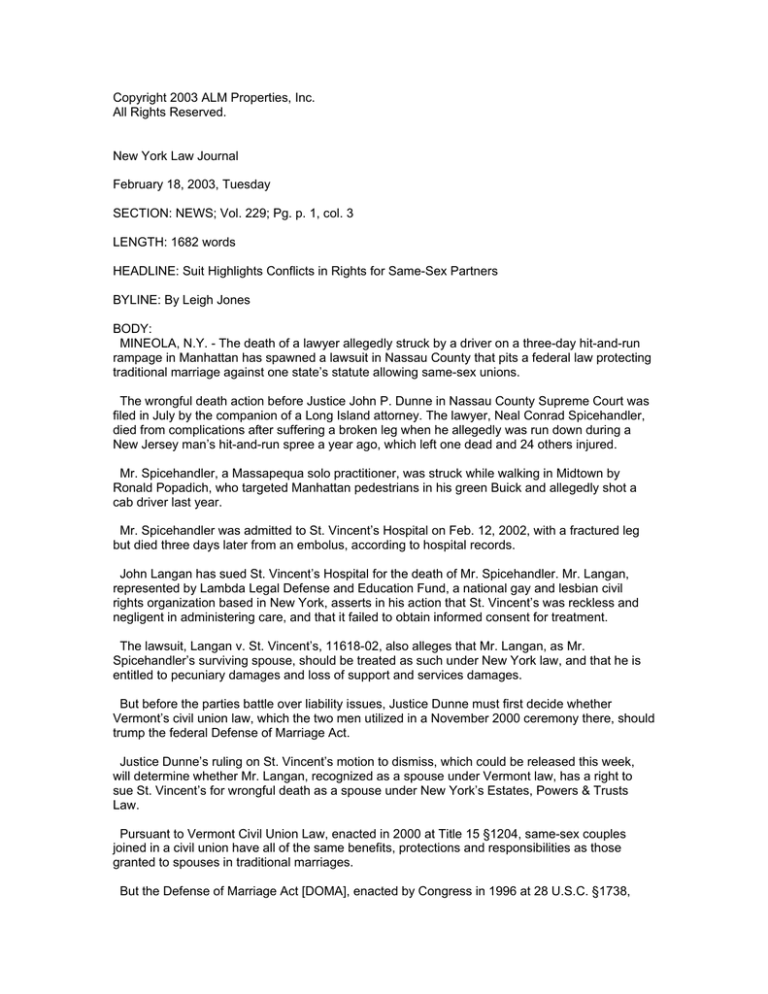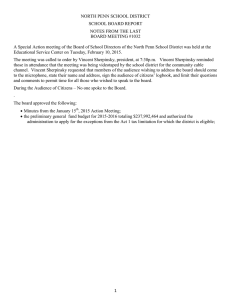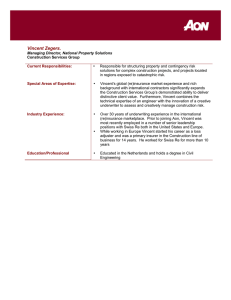Copyright 2003 ALM Properties, Inc. All Rights Reserved. New York Law Journal
advertisement

Copyright 2003 ALM Properties, Inc. All Rights Reserved. New York Law Journal February 18, 2003, Tuesday SECTION: NEWS; Vol. 229; Pg. p. 1, col. 3 LENGTH: 1682 words HEADLINE: Suit Highlights Conflicts in Rights for Same-Sex Partners BYLINE: By Leigh Jones BODY: MINEOLA, N.Y. - The death of a lawyer allegedly struck by a driver on a three-day hit-and-run rampage in Manhattan has spawned a lawsuit in Nassau County that pits a federal law protecting traditional marriage against one state’s statute allowing same-sex unions. The wrongful death action before Justice John P. Dunne in Nassau County Supreme Court was filed in July by the companion of a Long Island attorney. The lawyer, Neal Conrad Spicehandler, died from complications after suffering a broken leg when he allegedly was run down during a New Jersey man’s hit-and-run spree a year ago, which left one dead and 24 others injured. Mr. Spicehandler, a Massapequa solo practitioner, was struck while walking in Midtown by Ronald Popadich, who targeted Manhattan pedestrians in his green Buick and allegedly shot a cab driver last year. Mr. Spicehandler was admitted to St. Vincent’s Hospital on Feb. 12, 2002, with a fractured leg but died three days later from an embolus, according to hospital records. John Langan has sued St. Vincent’s Hospital for the death of Mr. Spicehandler. Mr. Langan, represented by Lambda Legal Defense and Education Fund, a national gay and lesbian civil rights organization based in New York, asserts in his action that St. Vincent’s was reckless and negligent in administering care, and that it failed to obtain informed consent for treatment. The lawsuit, Langan v. St. Vincent’s, 11618-02, also alleges that Mr. Langan, as Mr. Spicehandler’s surviving spouse, should be treated as such under New York law, and that he is entitled to pecuniary damages and loss of support and services damages. But before the parties battle over liability issues, Justice Dunne must first decide whether Vermont’s civil union law, which the two men utilized in a November 2000 ceremony there, should trump the federal Defense of Marriage Act. Justice Dunne’s ruling on St. Vincent’s motion to dismiss, which could be released this week, will determine whether Mr. Langan, recognized as a spouse under Vermont law, has a right to sue St. Vincent’s for wrongful death as a spouse under New York’s Estates, Powers & Trusts Law. Pursuant to Vermont Civil Union Law, enacted in 2000 at Title 15 §1204, same-sex couples joined in a civil union have all of the same benefits, protections and responsibilities as those granted to spouses in traditional marriages. But the Defense of Marriage Act [DOMA], enacted by Congress in 1996 at 28 U.S.C. §1738, provides, in part, that “marriage” as a legal union is only between one man and one woman as husband and wife, and that the word “spouse” refers only to a person of the opposite sex. Also pursuant to the federal act, one state is not required to heed another state’s recognition of “a relationship between persons of the same sex treated as a marriage.” The plaintiff’s court papers explain that Mr. Langan and Mr. Spicehandler entered into the civil union in 2000, after living together for 13 years, partly because they wanted to protect their estates. The couple, who jointly owned a home in Massapequa Park, also executed health care proxies and purchased life insurance naming each other as the beneficiary. In addition, they had wills identifying each other as the beneficiary and the executors of their estates. Mr. Langan, who works in the insurance business, asserts that Mr. Spicehandler, a litigation associate with Graham & James in Manhattan before practicing solo on Long Island, was the major breadwinner for the couple. Despite the Vermont ceremony, St. Vincent’s argues in its brief that the civil union between the two men is a “narrow circumstance” created by the Defense of Marriage Act, which allows for an exception to the U.S. Constitution’s Full Faith and Credit doctrine. Represented by Richard Paul Stone of Costello, Shea & Gaffney, St. Vincent’s argues that the federal law creates an “absence of a constitutional directive to honor the Vermont civil union.” And without that directive, St. Vincent’s contends, it must turn to state case law, which recognizes neither same-sex marriages or spouses. But Mr. Langan, represented by Lambda attorney Adam L. Aronson, argues that the Defense of Marriage Act has no application in the action because it merely is a law that allows states, if they choose, to affirmatively deny same-sex unions in other states. Mr. Aronson asserts that 37 other states have used the federal act to pass their own laws establishing that they do not recognize same-sex unions in other jurisdictions. Thirteen states, New York among them, have not codified the power that the Defense of Marriage Act [DOMA] provides to states, he said. “At worst, it means New York has done nothing with respect to DOMA. At best, its silence indicates an implicit intention to allow the governing principles of comity as they exist in New York to govern with respect to same-sex marriages,” Mr. Aronson said. He also argues that the Defense of Marriage Act has no bearing on the action because it relates to “marriages” while Vermont’s law allows for “civil unions” of same-sex couples. St. Vincent’s asserts, however, that in addition to the federal law exempting Vermont’s law from requiring full faith and credit, the federal definition of ”spouse” excludes same-sex partners from all federal benefits. “This leaves no doubt that the Full Faith and Credit doctrine, which might otherwise burden New York to consider whether foreign status violates any domestic public policy, has no effect on plaintiff’s claim here,” the defense’s brief states. Both sides in Langan v. St. Vincent’s present the bulk of their arguments with the assumption that the Defense of Marriage Act is constitutional. But that is a faulty assumption, according to Eric M. Freedman, a Constitutional Law professor at Hofstra University School of Law. Mr. Freedman, a member of the executive committee for the Association of the Bar of the City of New York and a former chair of its civil rights committee, helped draft a report issued by the bar association that deemed the federal law unconstitutional. “It could certainly be argued that DOMA is unconstitutional in that it has no legitimate purpose and is designed to express hostility toward gays,” Mr. Freedman said. “If a state wishes to allow gay marriages, then for Congress to exempt only those marriages from the duty to give full faith and credit, it seems like a bare desire to express hostility to a group of people.” Mr. Langan’s complaint does raise an equal protection argument. But his argument focuses on the New York Constitution and St. Vincent’s attempts to limit New York’s Estates, Powers & Trusts Law by allowing only opposite-sex spouses to pursue wrongful death actions. Such a restriction, the plaintiff contends, would have a “severely discriminatory effect” on gay and lesbian people in violation of equal protection under the New York Constitution. “If adopted by this Court, it would mean that all lesbian and gay couples ... are presently excluded from any possibility of protection under New York’s wrongful death statute, even if they took every step legally available to them to formalize and protect their relationship and each other,” the plaintiff’s court papers read. In response, St. Vincent’s asserts that Mr. Langan’s equal protection argument cannot meet the “precipitous legal threshold” of showing that no rational basis exists in the EPTL law for limiting spouses to the opposite sex. “Against the presumed validity of the State’s definition of that expression, plaintiff must attack either the legitimate interest in promoting the traditional family or demonstrate that the definition is not rationally related to that interest,” St. Vincent’s wrote in its brief. But Mr. Freedman, the law professor, said that in equal protection issues involving matters of family and marriage, such as this case, courts have used a stricter standard, one he calls a “rational basis with teeth.” As such, courts may employ a “sliding scale of scrutiny” to laws affecting certain parties, even though they are not a protected class. Equal protection and the Defense of Marriage Act aside, St. Vincent’s primary defense strategy appears to focus on what it calls the “only issue” in the case: whether the language and application of the state’s Estates, Powers and Trusts Law is intended to include members of same-sex couples as spouses for purposes of descent and distribution. “It is one thing for the State to have decriminalized such private, consensual relations but another thing altogether to sustain a right to be compensated for its loss in a relationship the State does not even recognize,” St. Vincent’s brief states. The hospital further argues that New York’s strong public policy and case law establish that the Vermont statute should not be recognized, and that the traditional definition of spouse applies to the state’s EPTL. To bolster that position, St. Vincent’s relies on a 1993 Second Department decision, In re Cooper, 187 AD2d 128, in which the appeals panel affirmed the Kings County surrogate’s determination that the ordinary and accepted meaning of ”spouse” is “husband or wife.” In addition, St. Vincent’s points to a 1998 First Department decision, Raum v. Restaurant Assoc., 252 AD2d 369, in which the court, relying on In re Cooper, affirmed the dismissal of a wrongful death claim brought for the benefit of a same-sex spouse. The court in Raum affirmed a lower court decision and concluded that “spouse” should not be read to include same-sex partners. Even so, Mr. Aronson argues that neither In re Cooper nor Raum involves cases of a “legally recognized” civil union, as is the situation with his client. “The consistent application of principles of comity require New York to extend full recognition here,” he said. Attorney David Taback, in New York, is assisting the plaintiff in the wrongful death action.


